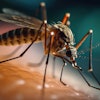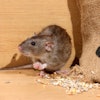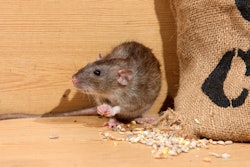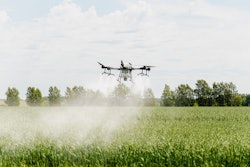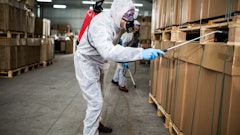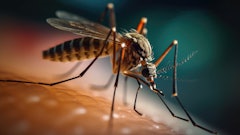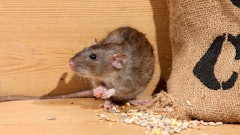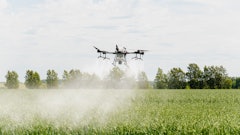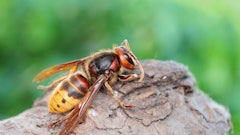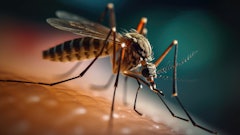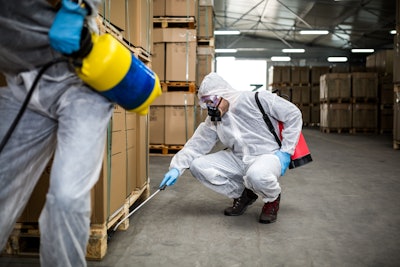
Cold food and beverage supply chains are designed to minimize risk. Yet even in chilled, frozen, and controlled environments, pests can find opportunities, often in the same places people and products move. From receiving docks to cross-docks, from staging yards to employee break rooms, the most common vulnerabilities share a theme: doors, gaps, and behaviors that break the facility “barrier.”
Here are field-tested best practices drawn from real cases across produce, snack, dairy, nut, and ready-to-eat operations to harden defenses without slowing business.
Start where pests start: Door management
If there’s a single thread running through most cold chain pest issues, it’s door management. Pedestrian doors, roll-ups, and dock doors are frequent failure points, especially when crews are busy or cleaning is underway.
- Seal the envelope. Inspect and document the condition of gaskets, sweeps, thresholds, and caulking. Replace anything that lets light or air through. A thin sliver of daylight is an open invitation to rodents and flying insects.
- Minimize open time. Sensors and access logs often show pedestrian doors standing open for hours. In one berry processing site we serviced, an exterior door facing a field was frequently left open at night explaining the increase in mouse captures in that area of the facility. Recommendations to the client to install auto-close hardware and educate employees on why all doors that are not in use must remain closed will help close the gap on the problem.
- Tighten up the docks. The gap between the building, the leveler, the truck door, and the trailer is rarely perfect. Use dock-seals/shelters, verify compression, and ensure trucks are snug before loading begins. Even small misalignments allow flies and rodents to gain access to a facility. And negative air pressure can pull flying insects into a facility, making it critical to monitor and balance airflow to keep pests out and protect food safety.
Understand what’s riding along
Cold chain logistics move fast, and pests of all types will take advantage of that to gain access to modes of transportation and food storage facilities.
- Hitchhikers in transit. Rodents and insects can move from farm to packing line to cross-dock. Roll-up doors left open during staging are a simple entry point for all sorts of pests.
- Staging vulnerabilities. Avoid storing corrugated carboard, wooden crates, pallets and storage containers outdoors. An egg processing facility inadvertently introduced deer mice after storing cardboard outside, then bringing them in to flatten. In a hazelnut storage facility, mice nested in harvest bins that were stored outside. The mice were introduced into the building once the bins were brought inside.
- Rail car realities. Timing is the key when it comes to effective rail car fumigation. Some inbound commodities are fumigated in transit and are still vulnerable to pests before they reach their final destination. If only the headspace is checked upon arrival, residual gas can be released inside the facility and live insects may still be in the commodity. Coordinate with suppliers and your pest control service provider to keep safety and efficacy aligned.
- Cross dock threats. Every hand-off of product is a chance for pests to move to somewhere they are not welcome. Design protocols to minimize open-air dwell time, require doors to be closed during idle periods and inspect packaging for signs of pests before the reload is complete.
Match controls to your building and your geography
Not all risk is created equal in construction. Building design and location elevate or reduce pressure.
- Construction details matter. Uncapped cinderblock and hollow block cavities create hidden pathways from grade to roofline for pests, especially rodents. Retrofitted warehouses converted into processing rooms can provide access to spiders and small insects through hairline gaps. Close, cap, and seal openings with the appropriate materials, especially in older buildings where structural deficiencies and dated construction practices are common.
- Tolerance levels vary by process. Facilities with open, unprocessed areas (i.e., packing green beans or potatoes) have different pest tolerances and controls than facilities handling ready-to-eat food or infant-formula lines. In partnership with your pest control service provider determine and adjust inspection frequencies, captures thresholds (i.e., pest monitoring devices including insect light traps (ILTs)), and corrective actions accordingly.
- Geography drives pests. Proximity to fields, orchards, or water changes the pest management playbook. Night-flying moths may spike around illuminated doors; rodent pressure can swell during harvest and both large and small flies surge near organic residues. Knowing who your neighbors are and regularly reviewing pest trend data will help you determine the right course of action.
Mind the outside to protect the inside
What sits just outside your building often dictates what ends up inside.
- Dumpsters. Keep compactors and bins as far from doors as practical and on a concrete pad with intact drain plugs. Residuals like melted chocolate and nuts can create a chronic source for stored-product pests and flies if bottoms aren’t fully cleaned.
- Routes and routines. If waste is rolled out by forklift several times a week, schedule runs during lower-pest pressure periods and don’t stage near open roll-ups. Add air curtains, door sweeps or rapid-roll doors where practical.
- Lighting and landscaping. Re-aim or replace exterior lighting with warm colored LEDs which will reduce attracting night-flying insects to doorways. Keep vegetation trimmed and remove harborage within the pest-critical “first three feet.”
Build a program around data, not guesswork
An effective cold chain integrated pest management (IPM) program pairs targeted prevention with actionable data.
- Monitor the right locations. Place ILTs and rodent devices where pests are likely to attempt to gain access - receiving, docks, pedestrian doors, and break rooms. Document placement and service intervals; set pest threshold levels (i.e., captures per device) that trigger follow up.
- Find the root cause. Look for correlations between open-door events, production schedules, cleaning and sanitation protocols, and spikes in pest capture data. For example, in a 15,000-square-foot warehouse, fly, stinging insect, and stored-product pest activity consistently registered on monitoring devices near a door leading to the facility’s trash area, located 15 feet from the building. A detailed inspection revealed the source: melted chocolate that had accumulated at the bottom of the bins. In addition to recommending more thorough cleaning of the bins, it was also noted that no secondary barrier (such as air curtains doors) had been installed to deter pests while forklifts removed trash three times a week.
- Close the loop. Use weekly or monthly reviews with your pest services provider partner and maintenance team to assign actions (seal replacement, light relocation, sanitation fix) and verify completion. Data should drive decisions and demonstrate effectiveness of the program.
People practices: The overlooked risk
Employees are critical allies, and sometimes accidental vectors.
- Break and locker rooms. These spaces are frequent sources of German cockroach introductions via bags and lunch boxes. Avoid blame; instead, install discreet monitoring, provide airtight storage bins for lunch boxes, and improve sanitation.
- Simple habits, big impacts. Closing doors, reporting damaged seals, and not staging corrugate outdoors are behaviors that keep pests out. Replace door seals as needed and post clear reminders to close doors at high-risk areas.
Sanitation and exclusion: Daily, not occasional
Cold doesn’t cancel sanitation. It concentrates it.
- Moisture and residues. Condensation, floor drains, and residue around processing or waste areas attract large flies and small flies. Clean regularly to remove build up, verify drain condition and install tight-fitting covers where appropriate.
- Exclusion is ongoing. Temperature swings, forklifts, and cleaning degrade seals and caulks. Make exclusion a standing work order, not a once-a-year event.
A cold chain IPM checklist you can implement now
- Door management: Inspect, repair, and log seal conditions; set alerts to reduce open time.
- Exclusion: Cap hollow block, seal penetrations, and maintain thresholds and sweeps.
- Monitoring: Deploy ILTs and traps in receiving, docks, and common areas; set thresholds.
- Sanitation: Remove organic residues, clean drains, and manage moisture.
- Waste Controls: Distance dumpsters, clean bottoms, and schedule runs to reduce exposure and spillage.
- Staging discipline: Keep corrugate and wood away from the building; inspect incoming pallets and crates.
- Transport protocols: Tight dock seals minimized dwell times, and proper fumigant aeration.
- People practices: Train on lunch storage, door habits, and rapid reporting of defects.
- Data and reviews: Trend captures, correlate with operations, and assign/verify corrective actions.
- Partner strategically: Treat your pest provider as part of your food safety team.
The bottom line: Let data show you the way
The most effective pest control programs in cold food and beverage supply chains share three traits: tight barriers, disciplined behaviors, and data-driven decisions. When you combine rigorous door management with continuous exclusion, targeted monitoring, and operations-aware sanitation, you reduce risk, avoid chasing symptoms, and protect product integrity.
In an industry where a single contaminant can trigger recalls and liability, a solid, documented IPM program isn’t just best practice, it’s essential infrastructure for a resilient cold chain. Let the data guide your next move.


